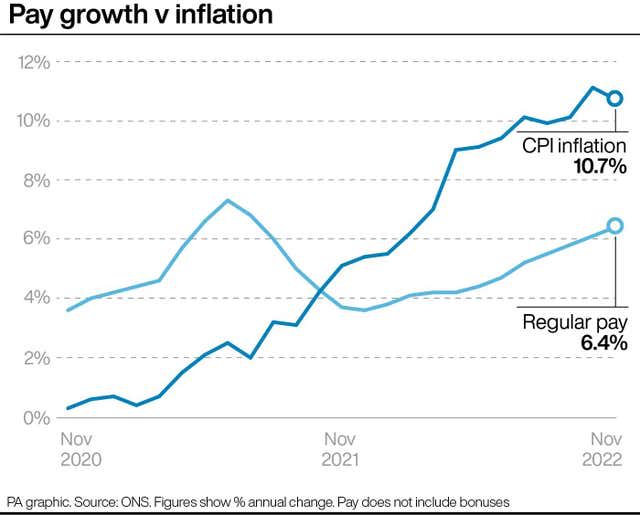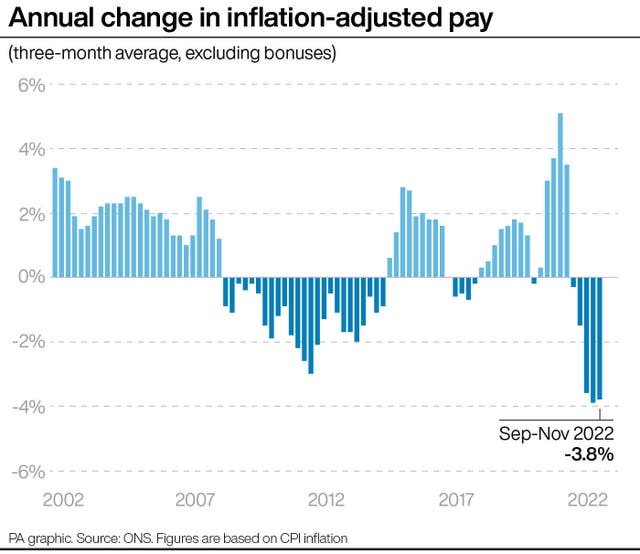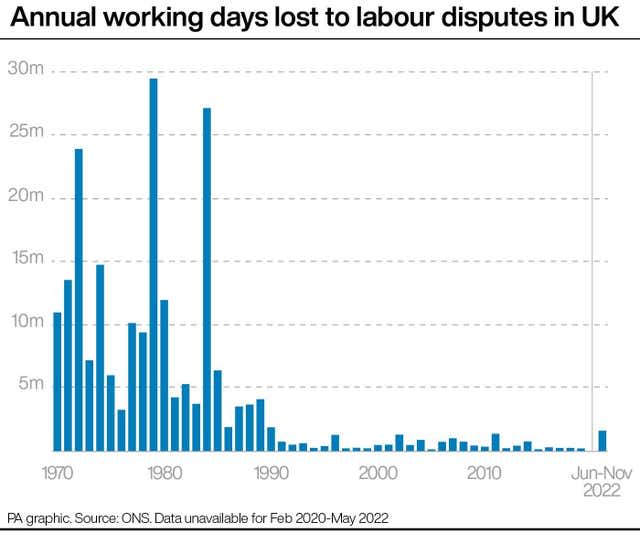Wages fail to keep up with prices as unemployment rises
The proportion of working-age people who were unemployed in the UK rose in the three months to November, while wages fell further behind soaring prices than at almost any point since records began, new figures show.
The unemployment rate rose to 3.7% over the period, from 3.5% in the previous quarter, the Office for National Statistics said on Tuesday.
The change was driven largely by an increase in people looking for work, as the proportion of people in employment remained unchanged during the period.

Those who are not in employment or looking for work do not count towards these figures.
ONS director of economic statistics Darren Morgan said: “In the most recent three months, employment levels were largely unchanged on the previous three months.
“However, unemployment rose, driven by more young people who have only recently become unemployed, meaning overall there was a small increase in people actively engaged in the jobs market, whether working or looking for work.”

The proportion of those considered “economically inactive” dropped by 0.1 percentage point to 21.5%, largely driven by 16 to 24-year-olds and those aged 50 to 64.
It comes as people try to find ways to deal with the ballooning cost of living.

But being in a job has not helped workers escape from soaring prices, despite major pay rises for private-sector employees.
Pay rose by 6.4% in the three months – 7.2% in the private sector and 3.3% for public sector workers – yet failed to keep up with prices.
In real terms, which means that pay rises are adjusted for inflation, pay dropped by 2.6%.

This is better than the 3% fall seen in April to June last year, but remains one of the worst falls since records began in 2001.
“The real value of people’s pay continues to fall, with prices still rising faster than earnings. This remains amongst the fastest drops in regular earnings since records began,” Mr Morgan said.
To try to force bigger rises, many workers abandoned their workplaces to strike in November. The 467,000 working days lost to labour disputes was the highest since November 2011.

Chancellor of the Exchequer Jeremy Hunt said: “The single best way to help people’s wages go further is to stick to our plan to halve inflation this year.
“We must not do anything that risks permanently embedding high prices into our economy, which will only prolong the pain for everyone.”
Shadow work and pensions secretary Jonathan Ashworth said: “Today’s figures show the Tories are totally bereft of ideas when it comes to tackling the cost-of-living crisis, growing the economy and supporting people into work.
“Real wages are plummeting, almost two-and-a-half million people are out of work because of sickness, and far too many people – especially the over-50s – aren’t getting the support they need to either stay in work or to go back to work.”

 Yahoo Finance
Yahoo Finance 